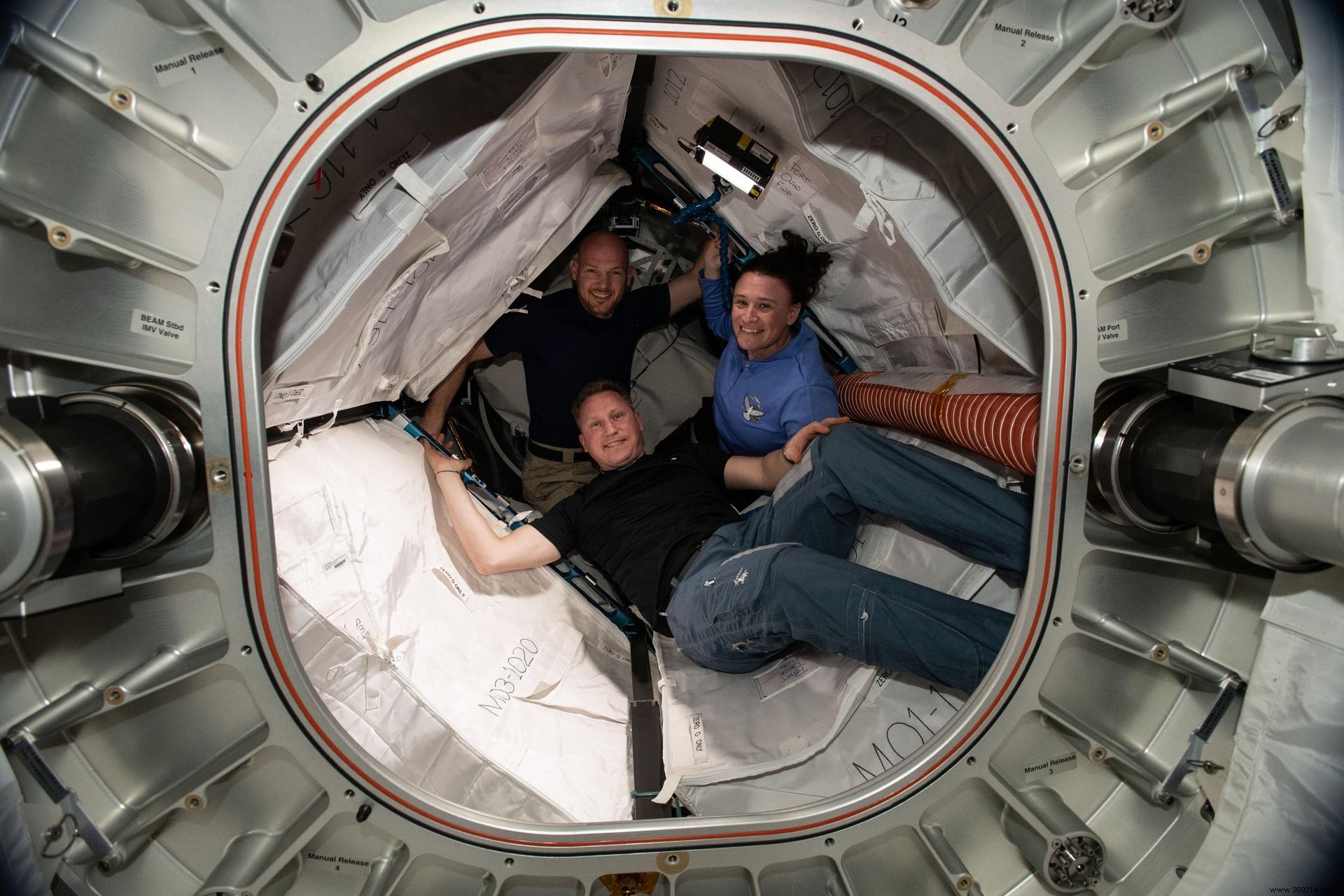Experiencing an emotional breakdown while aboard the ISS in 2018, American astronaut Serena Auñón-Chancellor allegedly drilled a hole in one of the modules Russians in order to return to Earth sooner, according to the public news service TASS. NASA denies these defamatory accusations.
Throwback to 2018. Russian cosmonaut Sergey Prokopyev, European Space Agency astronaut Alexander Gerst and NASA astronaut Serena Auñón-Chancellor travel aboard the ISS in June, aboard the Soyuz MS-09 vehicle. At the end of August, a breach of two millimeters is isolated on the hull of the spacecraft's orbital module. Such a hole could depressurize the station in two weeks. Very quickly, the cosmonauts plugged the hole. The Soyuz spacecraft is finally deemed safe. It will bring its crew of three back to Earth in December.
How did this hole appear? A micrometeoroid impact was quickly ruled out. Some Russian media later reported that the breach was caused by a manufacturing or testing fault. If this theory is indeed the most plausible, some sources, within the Russian government, however, have launched unfounded rumors according to which an American astronaut could be at the origin.
To find out more, two Russian cosmonauts then carried out a spacewalk in December 2018 to sample and image the site where the hole was. If the Russians have completed their investigation, they have never made it public… Until last week.
During an interview following the publication of this article, journalist Mikhail Kotov spoke with a "high-ranking Russian space industry official" remained anonymous. Based on the comments made by this person, it would be the boss of the Russian space company Roscosmos, Dmitry Rogozin, according to Ars Technica .
The takeaways from this exchange are as follows. During the interview, the person assures that this kind of damage could not have happened on Earth, the spacecraft being tested in a vacuum chamber before the launch. "If there had been a hole, she said,the pressure in the vessel would have dropped rapidly and he would not have passed the test ” .
The person then focuses on astronaut Maria Auñón-Chancellor who, during her mission in 2018, suffered from deep vein thrombosis. This health glitch could have caused, she says, “ an acute psychological crisis ” , which "could have led to attempts by various means to hasten his return to the planet" .
In addition, for some unknown reason, the camera capable of filming the junction of the Russian and American segments was not working at this time.
Then, Russia never had the opportunity to study the tools and the drill on the American side to see if it actually contained traces of metal shavings from the hull of the Russian orbital module.
Finally out of eight holes, only one went through the hull. The others were "drill jumps" likely to occur in weightless conditions with no support needed. The hole was also drilled into the frame (a transverse rib of the ship's hull), suggesting that whoever drilled it was not trained in building the Soyuz MS.

The US agency obviously refuted these dangerous accusations. “ NASA astronauts, including Serena Auñón-Chancellor, are highly respected, serve their country, and make invaluable contributions to the agency ” , said Kathy Lueders, NASA's head of human spaceflight. " We support Serena and her professional conduct. We do not believe there is any credibility to these accusations ” .
The idea that an astronaut sneaks into space on the Russian side to drill a hole in the hull of a module in order to return to Earth earlier seems even absurd. Especially since the NASA space station program had already recorded several drops in pressure at the end of August 2018, and none of the American astronauts on the station were near the Soyuz vehicle at that time. US officials at the time shared this data with the Russians.
While the TASS article dismisses the possibility that the problem occurred on Earth, it is still the most plausible theory, according to Ars Technica . Indeed, a technician could have accidentally damaged the ship and sought to cover up this error by applying a "makeshift patch". This operation could have allowed the spacecraft to pass the vacuum chamber test on Earth, before finally giving way due to prolonged exposure in orbit.